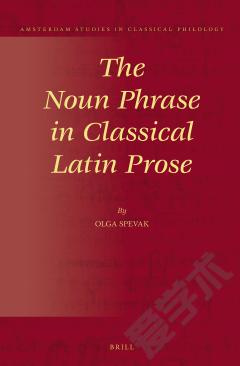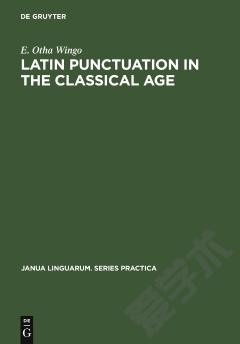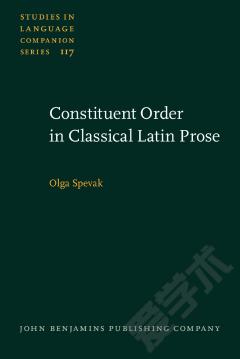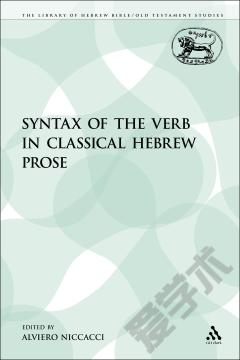The Noun Phrase in Classical Latin Prose
Contents PREFACE ABBREVIATIONS CHAPTER 1 THE NOUN AND ITS MODIFIERS 1. Introduction 2. The noun 2.1. Parameters for a description of nouns 2.2. Specific - generic - referential 2.3. The typology of nouns 2.4. Noun valency 3. Modifiers 3.1. The types of modifiers 3.2. The frequency of modifiers 3.3. The typology of modifiers and hierarchic levels 3.4. Determiners, quantifiers, and identifiers 3.5. Adjectives 3.6. Genitive complements 3.7. Dative, ablative, and accusative complements 3.8. Prepositional phrases 3.9. Embedded predications 4. Conclusions CHAPTER 2 THE NOUN PHRASE 1. Introduction 1.1. Pragmatic functions of noun phrases and their components 1.2. Values of modifiers 1.3. The referent 1.4. Special arrangements 1.5. The placement of modifiers: problems of analysis 1.6. An overview of the nouns examined 2. Quantifying a referent 2.1. Count nouns 2.2. Non-count nouns 3. Specifying a referent 3.1. Classifying adjectives 3.2. Adjectives derived from proper names 4. Describing a referent 4.1. Inanimate concrete entities 4.2. Animate entities 5. Evaluating a referent 5.1. Attribution of an abstract quality 5.2. Evaluations of extent or importance 6. Identifying a referent 6.1. Adjectives expressing a relative position 6.2. Ordinal numerals 7. Expressions of possession 7.1. Adjectives derived from proper names 7.2. Possessive genitives 8. Valency complements 8.1. Subjective and objective genitives 8.2. Possessive pronouns 8.3. Prepositional phrases with cum 8.4. Prepositional phrases with de 8.5. Completive clauses 9. Other complements 9.1. Genitives with dies and liber 9.2. Prepositional phrases with de 10. Complex noun phrases 10.1. Framing of noun phrases 10.2. Memoria and opinio 11. Conclusions CHAPTER 3 THE PREPOSITIONAL PHRASE 1. Objective 2. Prepositional phrases: the ordering of their components 2.1. Integration of modifiers and framing 2.2. The method 2.3. Quantifiers 2.4. Adjectives 2.5. Multiple modifiers 2.6. Genitive complements 3. Adnominal prepositional phrases 3.1. Problems of attachment 3.2. Nouns governing prepositional phrases 3.3. Adjectives governing prepositional phrases 3.4. Partitive expressions 4. Conclusions CHAPTER 4 APPOSITIONS 1. Introduction 2. Two types of apposition: close apposition and free apposition 2.1. First overview 2.2. Close appositions 2.3. Free appositions 2.4. Problems with the description of appositions 2.5. Sp. Albinus consul vs. consul Albinus 2.6. Distribution of appositions in a sample 3. Close appositions 3.1. Appositions with consul and praetor 3.2. Appositions with urbs and oppidum 3.3. Appositions with flumen / fluvius 3.4. Agreement 4. Free appositions 4.1. General properties 4.2. Free appositions with official functions 4.3. Free appositions with urbs, oppidum, and flumen 4.4. Free appositions with homo and familiaris 4.5. Agreement 4.6. The use of prepositions in free appositions 4.7. Discontinuity 5. Other appositions 5.1. Kinship nouns 5.2. Rex 5.3. Status and activity 5.4. Two common nouns 5.5. Explicit indicators of appositions 6. Right dislocation (Tail constituents) 6.1. Tail constituents related to a noun or a pronoun 6.2. Right dislocated constituents expressing subjective evaluation 7. Conclusions CHAPTER 5 CONCLUSIONS APPENDIX REFERENCES GLOSSARY OF LINGUISTIC TERMS INDEX
{{comment.content}}








 京公网安备 11010802027623号
京公网安备 11010802027623号